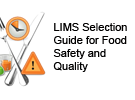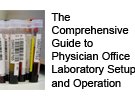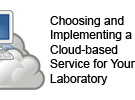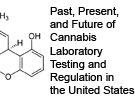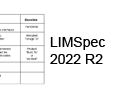Difference between revisions of "LII:Past, Present, and Future of Cannabis Laboratory Testing and Regulation in the United States/Future of cannabis regulation, testing, and market trends"
Shawndouglas (talk | contribs) (Created as needed.) |
Shawndouglas (talk | contribs) m (Protected "LII:Past, Present, and Future of Cannabis Laboratory Testing and Regulation in the United States/Future of cannabis regulation, testing, and market trends" ([Edit=Allow only administrators] (indefinite) [Move=Allow only administrators] (...) |
Revision as of 00:42, 11 April 2017
What good would be a guide to the rapidly changing cannabis testing and regulation climate without some analysis of what the future may hold? This fourth chapter looks at the future of cannabis regulation and the associated market, as well as the future of lab testing and production. It also touches on fears of "Big Marijuana" and examines non-U.S. policy and how it may affect U.S. regulation in the future.
4. Future of cannabis regulation, testing, and market trends
Regulation and market
On February 23, White House Press Secretary Sean Spicer indicated for the first time that the Trump administration would indeed be ramping up enforcement in states that have legalized recreational marijuana use, stating "I do believe that you’ll see greater enforcement," adding that "there’s a big difference between the medical use ... that’s very different than the recreational use, which is something the Department of Justice will be further looking into."[1] Five days later, U.S. Attorney General Jeff Sessions continued to send pessimistic signals, stating he was "dubious about marijuana," and that "[w]e have a responsibility to use our best judgment ... and my view is we don’t need to be legalizing marijuana."[2] Several days later, seemingly in response to both Spicer's and Sessions' comments, 11 U.S. senators sent a letter to Sessions asking him to keep in mind Trump's campaign promises of letting states decide their own fate on legalization efforts.[3]
Until demonstrably intrusive federal enforcement actions take place in states with legalized recreational marijuana, it won't be clear if the administration is simply making an implied, noisy threat in order to bring more in the industry to heel. More certain is mounting evidence that a growing majority of U.S. voters believe the federal government should not be enforcing its laws in such states: 64 percent agreed on this in 2012[4], rising to 71 percent in 2017.[5] Despite such support, it may largely be up to the states in the future to twist the arm of the federal government. Legal representatives at Thompson Coburn expressed this idea well in a blog post in November 2016[6]:
The cannabis industry may have to consider forcing the federal hand by providing credible data on the safety of cannabis as it was invited to do in the DEA decision, in addition to the continuing to support the groundswell of approval at the state level. At some point, in the near future, the state regulatory position and the federal position will have to be reconciled. The industry can and should prompt that reconciliation by a clear united message to federal lawmakers. Without that, it remains unlikely that agencies, such as the FDA, will change its position on cannabis. A lack of change will inhibit market growth and prevent the cannabis industry from reaching its potential.
The obvious issue with expanding research and testing on cannabis and of its safety is acquiring the product within a legal framework and a reasonable time frame. As mentioned previously, the DEA has recognized the need for more federally approved growers than the NIDA center at the University of Mississippi (which came under fire in March 2017 for not testing its provided samples for mold and other contaminants in any standardized fashion[7]), and they've begun accepting applications for additional entities looking to grow marijuana for researchers.[8] Assuming the Trump administration doesn't force the DEA to change course — and signs point to the administration at least being on spoken record of supporting medical marijuana and associated research[9] — researchers will optimistically have more options for acquiring research-quality cannabis in the future. This should in turn allow researchers a shot at more focused studies that provide efficacy and safety data related to the medical use of cannabis.[6] In fact, this has been a goal of Dr. Susan Weiss, Division Director of Extramural Research at the National Institute on Drug Abuse (NIDA) for some time. In July 2016 testimony to the U.S. Judiciary Committee[10] and in a February 2017 research paper set to be published in The International Journal of Drug Policy[11], Weiss cautiously recognizes and promotes the need for further evidence-based cannabis research, emphasizing both the healthy and detrimental effects evident so far in the plant and its constituents. She said of recent federal actions towards this goal[10]:
Multiple agencies (NIH, ONDCP, DEA, and FDA) are working together to find ways to streamline the process to facilitate research while meeting international and legislative obligations under the Single Convention on Narcotic Drugs and the Controlled Substances Act. In addition to actions taken by the Department of Health and Humans Services to eliminate the Public Health Services (PHS) committee review for non-federally funded marijuana research, the DEA recently streamlined the administrative process for CBD research to allow researchers to obtain a waiver of the requirement for review of changes to an approved protocol in their DEA research registrations, and is attempting to address the marijuana diversity and product development concern by licensing additional manufacturers.
Another recent and significant body of research that may have future influence on cannabis research itself is a massive January 2017 cannabis literature review published by the National Academies of Sciences, Engineering, and Medicine. This 440-page report detailed the National Academies' findings after reviewing more than 10,700 abstracts related to cannabis. Among its final recommendations, the authors called for[12]:
- public and private entities to fund and support a national cannabis research initiative that looks to fill key knowledge gaps;
- government agencies to develop research methods and standards that may act as a guide towards higher-quality cannabis research;
- government agencies, non-profit associations, and state and local health departments to fund and support efforts to improve federal, state, and local public health surveillance systems and efforts; and
- government, non-government, and industry entities to work together towards developing a report on existing regulatory barriers to research and how to overcome them.
However, some researchers such as Mayo Clinic psychiatrist and researcher Michael Bostwick are less convinced that the barriers will fall — claiming federal entities shift too much focus on the detrimental effects and not enough on the potential benefits — and aren't optimistic about the direction the Trump administration will take.[13] Despite this pessimism, predictions of substantial revenues in states where recreational marijuana is legalized or could be legalized persist.[14][15][16] The latest national estimates by market research and analytics company New Frontier Data put the U.S. marijuana industry at $24 billion by 2025, with 255,000 total jobs by 2019.[17] Yet entities such as the Denver-based Marijuana Policy Group and cannabis law firm Vicente Sederberg LLC preach caution when dealing with tax revenue estimates and economic projections in the U.S. cannabis market[17], pointing to CIBC World Markets' grossly inflated tax revenue estimate of $142 CAD ($106 USD) per resident in January 2016, an overshot of about 300 percent.[18] "This is a fast-paced, changing market with varying different dynamics that have more to do based on governmental and regulatory dynamics than they do on consumer dynamics," said Vicente Sederberg's director of economics and research Andrew Livingston.[17]
Indeed, current and future regulatory dynamics seem to be the biggest wildcards in making market-based predictions, with predicted tax and associated revenue estimates capable of both being significantly too high (by inadequately taking into account local and regional cultural and economic statuses) or too low (by not anticipating new states legalization efforts, research breakthroughs, or ties to other mainstream but related industries).[17][18] Additionally, too much regulation can put a stranglehold on a state's cannabis program development — as it has done in Minnesota[19] — causing related grow-ops and laboratories to take significant losses or even go out of business.
Lab testing
Future-looking estimates on cannabis lab testing are more difficult to find. The primary numbers being floated around originate from a June 2015 market report published by GreenWave Advisors titled Marijuana lab testing: An in depth analysis of investing in one of the industry’s most attractive plays. GreenWave suggested that if the U.S. were to quickly legalize cannabis at the federal level, lab testing revenues alone would be $553 million by 2020, $866 million including related activities such as data analysis and consulting.[20][21][22]
As for advances in cannabis lab testing, Kuzdzal et al. of Shimadzu envision a future where improvements in standardization, quality control, and research will shift what is tested and how its tested[23]:
The cannabis industry and cannabis testing are in their infancies. As the need for better quality control continues and standardization is introduced, it is likely that lower limits for the various cannabis contaminants will be established and regulations will be introduced. Mass spectrometry will likely play a greater role in quantitation as detection levels are lowered and confirmatory tests are required. The health benefits of terpenes present in cannabis will also provide a fertile area of scientific research. CBD, CBG and other compounds appear to have a synergistic relationship with each other as well as with various THC forms and terpenes. This field needs much more investigation to determine mechanisms of action, bioavailability and health benefits.
Lab testing of cannabis should continue to provide more exact and useful results as methods and standards continue to evolve. Disparity of results between two labs for the same sample are continuing to narrow as states increasingly add testing requirements to their cannabis legislature.[24] Those testing requirements are increasingly based off a growing body of recommendations, guidance, and standards developed by the likes of the Americans for Safe Access Foundation (ASAF), American Herbal Pharmacopoeia (AHP), American Herbal Products Association (AHPA), American Oil Chemists' Society (AOCS), and the Association of Public Health Laboratories.[25][26][27][27][28][29][30] Proficiency tests such as the Emerald Test[31], which allows multiple labs to test an anonymous sample and compare results, should also continue to drive improved performance from cannabis testing labs.[24]
Another potential trend to keep an eye on with these testing laboratories: consolidation. Currently there's not a lot of data on the extent consolidation has affected the number of cannabis testing labs or how they operate; the industry is arguably still in its infancy. Regardless, mentions in press and practical examples demonstrate that consolidation is a real concern for the industry, if not now in the future. Suggestion of such came from Steep Hill Halent's CEO David Lampach in late 2013, anticipating "huge consolidation in general and fewer companies as a result."[32] The previously mentioned GreenWave Advisors as well as CannaSafe Analytics have also lent their voices to this idea in recent years.[33][34]
Production
Outside the lab, on the production side, resides a glimpse of technology that ties several of the previously mentioned ideas together: growing cannabis as an environmentally modified organism (EMO). A June 2016 article published in Motherboard references the Controlled Environment Systems Research Facility (CESRF) in Canada and its effort to apply innovations in growing plants in closed environments (such as on spaceships) to cannabis production.[35] Specifically, the researchers see promise in being able to precisely control grow conditions to produce a plant with a particular ratio of active chemicals. As such, the previously mentioned synergistic relationship of cannabis' chemicals can be more carefully studied, and the end product, once studied and methodically tested, could potentially "achieve the status of a conventional pharmaceutical commodity that a doctor can rely on and prescribe."[35] CESRF isn't alone in developing grow technology that can tailor the necessary conditions for a particular strain. Several Israeli-linked start-ups (see the last section "Non-U.S. policy" for more) like Corsica Innovations (LEAF) and Flux (Eddy) have been developing similar grow technology that may transform future research.[36][37][38]
With better research, more definitive fact-based decisions can be made in the regulatory sphere, better guiding medical and recreational marijuana policy. That said, keep an eye on developments in controllable production methods; advances in this area stand to improve many of the other facets of research and testing discussed.
Big Marijuana
Both U.S. states and the federal government have a long, sometimes torturous history with regulating and controlling the production and sale of drug-containing products such as pharmaceuticals, tobacco, beer, wine, and spirits. As such, it seems intuitive to examine the successes and failures of those past efforts when considering what to do with cannabis. One aspect of that examination that raises concern among some is the likelihood of a narrow group of commercial interests taking over all aspects of cannabis production, testing, distribution, and sales. Taking from "Big Pharma," "Big Tobacco," and "Big Alcohol," some fear a similar "Big Marijuana" industry will develop.[39] These fears can be found among small private growers at the hyper-local level[40], all the way up to the state government level.[41]
In fact, in a 2015 Pathways Report, the state of California — including its Lt. Governor Gavin Newsom — expressed this very concern in regards to how best to regulate marijuana in the state. When considering the marijuana industry structure, they found that controls should be put in place to better incentivize smaller industry players, stating "[t]he goal should be to prevent the growth of a large, corporate marijuana industry dominated by a small number of players, as we see with Big Tobacco or the alcohol industry."[41] Despite that advice, major California-based industry players such as Steve DeAngelo — who owns one of the largest medical marijuana dispensaries in the world and co-founded Steep Hill Labs — remain concerned that mandates for distribution, which mirror alcohol regulations, will only undermine small cannabis businesses in the state.[40]
Anti-marijuana alliances such as Smart Approaches to Marijuana (SAM) and corporation-friendly pro-cannabis Marijuana Policy Project (MPP) act as opposing special interest groups, one fighting against Big Marijuana, the other borrowing from a libertarian approach proposing regulation of marijuana in a way similar to alcohol.[40][42][43] These and other special interest groups inevitably bring about the perception that, as the Brookings Institution puts it, "the marijuana industry is as self-serving as any other commercial lobby," further propelling worries of Big Marijuana.[42]
If worries of large corporations taking over significant portions of cannabis production, testing, distribution, and sales markets actually come to fruition, how will they potentially manifest? The previously mentioned concern of increased consolidation of testing labs is arguably one sign, as is DeAngelo's concern of forced distribution contracts taking away from smaller businesses. Brookings also points out concerns of large firms gaining hold over the evolving regulatory status as well as upward trends in antisocial marketing, though they also argue against undue alarmism of commercialization at the same time.[39]
Another manifestation of how Big Marijuana may be taking hold is through the patenting of cannabis strains and methods. PBS' Nova reported in October 2016 that a group of California growers were granted a patent for "compositions and methods for the breeding, production, processing and use of specialty cannabis,"[44] raising concerns about how Big Pharma could capitalize. Mowgli Holmes — founder of Phylos Biosciences, a genetics testing laboratory for cannabis — says as much: "Everyone is terrified of some big corporation with deep pockets coming in and taking over ... and they should be." To fight against the misappropriation of patents for "public domain" cannabis strains, he and others have developed Phylos Galaxy to better track relations between existing cannabis strains and the creation of new strains. From a lab testing perspective, a small but increasing number of qualified labs could test not only for potency, terpenes, and pesticides but also genetically verify in a standardized format that a unique strain is actually what it is claimed to be, providing slight competitive advantage.[44] As the patenting trend continues (most recently a patent was issued to a Florida company for an "apparatus and methods for biosynthetic production of cannabinoids"[45]) the intellectual property war over strains and methods is bound to get more heated; as such, the development of accurate and open genetic and other laboratory testing methods may become increasing vital.
Non-U.S. policy
Aside from a few mentions of Canada and European regulation, this guide has focused solely on the state of cannabis and related lab testing in the United States. However, it would be remiss to not look at how policy elsewhere may potentially impact the U.S. cannabis market, if nothing else at least indirectly. Broadly speaking, other countries like the Netherlands and Portugal have put more emphasis on decriminalization and recreational legalization of marijuana than on researching and providing marijuana for medical purposes.[46] Israel has been one of the major exceptions to this generalization, arguably "up to 10 years ahead of other countries in innovation in the cannabis industry."[38] The country has been involved with cannabis research since the 1960s, and today it has its hands in many medical research-based initiatives (though recreational marijuana is still illegal), including[38][47]:
- The Green Book, a set of written protocols and policy detailing how doctors should work with medical marijuana (still in draft phase as of March 2017) as well as how it would be commercialized across the country; includes training and certification of 100 doctors for prescribing it[48][49]
- the creation of the Medical Cannabis Unit, a government agency that regulates medical cannabis research and use
- the development of significant investment and infrastructure for clinical trials involving medical cannabis
- the development of a national institute for medical marijuana research
- the discussion of potentially exporting cannabis and/or cannabis-related extracts and derivatives
- several higher education facilities offering courses and research opportunities on cannabis
- several start-ups developing improved cultivation, pharmaceutical, and medical device technology
Another major country challenging traditional cannabis regulation is Uruguay, which in December 2013 adopted the first stages of regulatory legislation that will ultimately make the cultivation, sale, and use (recreational and medical) of cannabis in the country legal and government-controlled. In part due to concerns regarding gang-related violence and a tentative but not proven connection to black-market cannabis, the country has since carefully and methodically implemented the laws and regulations with the goal of keeping in mind evidence-based research and the potential social impact.[50] In fact, a late February 2017 press release from Canadian company Emblem Corp. stated it and Uruguayan ICC International Cannabis Corporation would, pending finalization of regulatory processes between the two countries, begin a partnership that would have Emblem import CBD (cannabidiol) from ICC "to help fulfill the demand in the Canadian market."[51]
The reality of all this — combined with the legalization momentum in the U.S. and other countries — means that new pressures are being applied to organizers of international treaties and policy, and any future changes to those treaties and policy may inversely apply pressure back on the U.S. government to update its stance on cannabis. An October 2014 Brookings Institution interview revealed some of the issues "straining the limits of an international drug control regime that most participants, including the United States, have long understood to be quite strict."[52] Drug treaties such as the Single Convention on Narcotic Drugs (1961), Convention on Psychotropic Substances (1971), and United Nations Convention Against Illicit Traffic in Narcotic Drugs and Psychotropic Substances (1988) represent hard policy that the U.S. government (as well as other federal governments) has followed steadfastly for years. However, a dichotomy begins to form when federal governments bend those treaties either through outright legalization or, as is the case in the U.S., by allowing the states power to determine their own laws.[52]
As a result of these stresses, policy experts around the world are shining light on the need for not only federal governments but also international agencies such as the United Nations' World Health Organisation (WHO) to move forward with critical reviews of existing cannabis research in the social and medical domains and determine if revising cannabis' scheduling is appropriate. Additionally, policy experts urge United Nations members to discuss and amend existing treaties, even if such amendments only provide greater flexibility in regards to marijuana.[52][53]
Whether or not the decriminalization and legalization efforts of Israel, the Netherlands, Uruguay, and other foreign governments has a noticeable impact on international and U.S. federal law remains to be seen. However, it would be foolish to entirely ignore foreign policy when considering the future of cannabis — and by extension its laboratory testing — in the United States.
References
- ↑ Kumar, A.; Hotokainen, R. (23 February 2017). "Trump administration plans crackdown on recreational marijuana". McClatchy DC. http://www.mcclatchydc.com/news/nation-world/national/article134608704.html. Retrieved 02 March 2017.
- ↑ Wheeler, L. (28 February 2017). "Sessions: 'We don't need to be legalizing marijuana'". The Hill. Capitol Hill Publishing Corp. http://thehill.com/regulation/administration/321525-sessions-we-dont-need-to-be-legalizing-marijuana. Retrieved 02 March 2017.
- ↑ Hotokainen, R. (2 March 2017). "11 senators call on Trump team to allow sale of recreational marijuana". McClatchy DC. http://www.mcclatchydc.com/news/politics-government/congress/article135996463.html. Retrieved 02 March 2017.
- ↑ Newport, F. (10 December 2012). "Americans Want Federal Gov't Out of State Marijuana Laws". Gallup, Inc. http://www.gallup.com/poll/159152/americans-federal-gov-state-marijuana-laws.aspx. Retrieved 02 March 2017.
- ↑ "Republicans Out Of Step With U.S. Voters On Key Issues, Quinnipiac University National Poll Finds; Most Voters Support Legalized Marijuana". Quinnipiac University. 23 February 2017. https://poll.qu.edu/national/release-detail?ReleaseID=2432. Retrieved 02 March 2017.
- ↑ 6.0 6.1 Romza-Kutz, D.; Roth V., F. (15 August 2016). "The silver lining in the DEA’s refusal to reclassify cannabis". Tracking Cannabis. Thompson Coburn LLP. http://www.thompsoncoburn.com/insights/blogs/tracking-cannabis/post/2016-08-15/the-silver-lining-in-the-dea-s-refusal-to-reclassify-cannabis. Retrieved 25 January 2017.
- ↑ Hellerman, C. (8 March 2017). "Scientists say the government’s only pot farm has moldy samples — and no federal testing standards". PBS NewsHour. NewsHour Productions, LLC. http://www.pbs.org/newshour/updates/scientists-say-governments-pot-farm-moldy-samples-no-guidelines/. Retrieved 15 March 2017.
- ↑ "Applications To Become Registered Under the Controlled Substances Act To Manufacture Marijuana To Supply Researchers in the United States". Federal Register 81 (156): 53846–8. 12 August 2016. https://www.federalregister.gov/documents/2016/08/12/2016-17955/applications-to-become-registered-under-the-controlled-substances-act-to-manufacture-marijuana-to. Retrieved 27 January 2017.
- ↑ "Trump on Marijuana Policy". Marijuana Policy Project. 12 February 2017. https://www.mpp.org/federal/trump-marijuana-policy/. Retrieved 03 March 2017.
- ↑ 10.0 10.1 Weiss, S.R.B. (13 July 2016). "Testimony from Susan R.B. Weiss, Ph.D. on The State of the Science on the Therapeutic Potential of Marijuana and Cannabinoids before Judiciary Committee". ASL Testimony. U.S. Department of Health & Human Services. https://www.hhs.gov/about/agencies/asl/testimony/2016-09/the-state-of-the-science-on-the-therapeutic-potential-of-marijuana-and-cannabinoids/index.html. Retrieved 25 January 2017.
- ↑ Weiss, S.R.B.; Howlett, K.D.; Baler, R.D. (2017). "Building smart cannabis policy from the science up". International Journal of Drug Policy. doi:10.1016/j.drugpo.2017.01.007. PMID 28189459.
- ↑ National Academies of Sciences, Engineering, and Medicine (12 January 2017). "The health effects of cannabis and cannabinoids: The current state of evidence and recommendations for research". The National Academies Press. pp. 440. doi:10.17226/24625. http://nationalacademies.org/hmd/reports/2017/health-effects-of-cannabis-and-cannabinoids.aspx. Retrieved 03 March 2017.
- ↑ Grant, B. (23 January 2017). "Marijuana Research Still Stymied by Federal Laws". The Scientist. LabX Media Group. http://www.the-scientist.com/?articles.view/articleNo/48122/title/Marijuana-Research-Still-Stymied-by-Federal-Laws/. Retrieved 03 March 2017.
- ↑ Morris, C. (21 October 2016). "The next big billion-dollar cannabis markets investors are rushing to". CNBC. http://www.cnbc.com/2016/10/21/the-next-big-billion-dollar-cannabis-markets-investors-are-rushing-to.html. Retrieved 03 March 2017.
- ↑ Thomas, J.R. (7 February 2017). "Big pot of money waiting if CT legalizes marijuana, analysts say". The CT Mirror. The Connecticut News Project. http://ctmirror.org/2017/02/07/big-pot-of-money-waiting-if-ct-legalizes-marijuana-analysts-say/. Retrieved 03 March 2017.
- ↑ Houghton, S. (14 February 2017). "Town Manager: Marijuana Shops Could Boost Tax Revenue". The Mashpee Enterprise. Enterprise Newspapers. http://www.capenews.net/mashpee/news/town-manager-marijuana-shops-could-boost-tax-revenue/article_c27b9b71-fb63-52de-bc24-fda320f38a32.html. Retrieved 03 March 2017.
- ↑ 17.0 17.1 17.2 17.3 Wallace, A. (22 February 2017). "Report: America’s marijuana industry headed for $24 billion by 2025". The Cannabist. The Denver Post. http://www.thecannabist.co/2017/02/22/report-united-states-marijuana-sales-projections-2025/74059/. Retrieved 03 March 2017.
- ↑ 18.0 18.1 Wallace, A. (22 December 2016). "What legal states need to know about sketchy pot tax predictions". The Cannabist. The Denver Post. http://www.thecannabist.co/2016/12/22/marijuana-sales-pot-taxes-colorado-estimates-projections/69831/. Retrieved 03 March 2017.
- ↑ Potter, K. (12 August 2016). "Big losses for Minn. medical marijuana providers". MPR News. Minnesota Public Radio. http://www.mprnews.org/story/2016/08/12/big-losses-for-minn-medical-marijuana-providers. Retrieved 03 March 2017.
- ↑ "DigiPath, Inc.: A Unique Investment Vehicle in Laboratory Testing" (PDF). DigiPath, Inc. November 2016. pp. 28. http://digipath.com/wp-content/uploads/2016/11/DigiPath-Investor-Presentation-11.3.pdf. Retrieved 03 March 2017.
- ↑ "Signal Bay Makes Strategic Acquisition in the $850M Cannabis Testing Market". Signal Bay, Inc. 24 September 2015. https://signalbay.com/company-news/signal-bay-makes-strategic-acquisition-in-the-850m-cannabis-testing-market/. Retrieved 03 March 2017.
- ↑ "Marijuana lab testing: An in depth analysis of investing in one of the industry’s most attractive plays". GreeenWave Advisors, LLC. June 2015. https://www.greenwaveadvisors.com/research/marijuana-lab-testing-an-in-depth-analysis-of-investing-in-one-of-the-industrys-most-attractive-plays/. Retrieved 03 March 2017.
- ↑ Kuzdzal, S.; Clifford, R.; Winkler, P.; Bankert, W. (December 2016). "A Closer Look at Cannabis Testing" (PDF). Shimadzu Corporation. Archived from the original on 19 January 2017. http://web.archive.org/web/20170210234439/http://event.lvl3.on24.com/event/13/38/14/4/rt/1/documents/resourceList1484589923854/emerging_cannabis_industry_whitepaper.pdf. Retrieved 19 January 2017.
- ↑ 24.0 24.1 Nelson, S. (3 August 2016). "Has Lab Testing Turned A Corner?". Cannabis Business Times. GIE Media, Inc. http://www.cannabisbusinesstimes.com/article/has-lab-testing-turned-a-corner/. Retrieved 03 March 2017.
- ↑ "New Certification Program Brings Quality Assurance to the Medical Marijuana Industry". Information Forecast, Inc. 2016. http://infocastinc.com/industries/new-certification-program-brings-quality-assurance-to-the-medical-marijuana-industry/. Retrieved 02 February 2017.
- ↑ Cannabis Committee, AHPA (2 February 2016). "Recommendations for Regulators – Cannabis Operations" (PDF). American Herbal Products Association. http://www.ahpa.org/Portals/0/pdfs/AHPA_Recommendations_for_Regulators_Cannabis_Operations.pdf.
- ↑ 27.0 27.1 Upton, R.; Craker, L.; ElSohly, M. et al., ed. (2014). Cannabis Inflorescence: Cannabis spp.. American Herbal Pharmacopoeia. ISBN 1929425333. http://www.herbal-ahp.org/order_online.htm.
- ↑ Project CBD; Marcu, J. (16 March 2016). "Jahan Marcu: Cannabis Lab Testing & Safety Protocols". Project CBD. Project CBD. https://www.projectcbd.org/article/jahan-marcu-cannabis-lab-testing-safety-protocols. Retrieved 03 February 2017.
- ↑ Cassiday, L. (October 2016). "The Highs and Lows of Cannabis Testing". INFORM. American Oil Chemists' Society. https://www.aocs.org/stay-informed/read-inform/featured-articles/the-highs-and-lows-of-cannabis-testing-october-2016. Retrieved 03 February 2017.
- ↑ Association of Public Health Laboratories (May 2016). "Guidance for State Medical Cannabis Testing Programs" (PDF). pp. 35. https://www.aphl.org/aboutAPHL/publications/Documents/EH-Guide-State-Med-Cannabis-052016.pdf. Retrieved 01 February 2017.
- ↑ "The Emerald Test". Emerald Scientific, LLC. http://www.theemeraldtest.com/. Retrieved 03 March 2017.
- ↑ Lampach, D. (20 November 2013). "Q&A With CEO of Steep Hill Halent: US Cannabis Testing Market Could Hit $40M by 2016". Marijuana Business Daily. Anne Holland Ventures, Inc. https://mjbizdaily.com/qa-with-steep-hill-lab-ceo-david-lampach-cannabis-testing-market-could-hit-40m-in-2-years/. Retrieved 25 January 2017.
- ↑ CannabisFN (16 July 2015). "DigiPath (DIGP) Well Positioned To Take Advantage of $850M Cannabis Testing Market". The Marijuana Index. MJIC, Inc. http://marijuanaindex.com/digipath-digp-well-positioned-to-take-advantage-of-850m-cannabis-testing-market/. Retrieved 07 March 2017.
- ↑ Schroyer, J. (January 2016). "Industry Snapshot: Testing Labs". Marijuana Business Magazine. Anne Holland Ventures, Inc. https://mjbizmagazine.com/industry-snapshot-testing-labs/. Retrieved 07 March 2017.
- ↑ 35.0 35.1 Owens, B. (21 June 2016). "How Space Technology Will Produce the Best Weed Ever". Motherboard. Motherboard-IPTV LLC. https://motherboard.vice.com/en_us/article/how-space-technology-will-produce-the-best-weed-marijuana-cannabis-pot. Retrieved 07 March 2017.
- ↑ Gustafson, K. (7 December 2016). "Startup Launches Automated System It Claims Makes It Easy To Grow Marijuana At Home". Forbes. Forbes.com LLC. https://www.forbes.com/sites/katherinegustafson/2016/12/07/it-just-became-incredibly-easy-to-grow-marijuana-at-home-meet-leaf/print/. Retrieved 08 March 2017.
- ↑ Solomon, S. (9 November 2016). "Israeli startup creates idiot’s guide to home-grown food". The Times of Israel. http://www.timesofisrael.com/israeli-startup-creates-idiots-guide-to-home-grown-food/. Retrieved 08 March 2017.
- ↑ 38.0 38.1 38.2 Press, V.S. (13 February 2017). "5 reasons Israel is dominating the cannabis industry". ISREAL21c. https://www.israel21c.org/5-reasons-israel-is-dominating-the-cannabis-industry/. Retrieved 08 March 2017.
- ↑ 39.0 39.1 Hudak, J.; Rauch, J. (June 2016). "Worry about bad marijuana—not Big Marijuana" (PDF). The Brookings Institution. pp. 18. https://www.brookings.edu/wp-content/uploads/2016/07/big-marijuana-1.pdf. Retrieved 10 March 2017.
- ↑ 40.0 40.1 40.2 Solovitch, S. (29 August 2016). "How Big Alcohol Is About to Get Rich Off California Weed". POLITICO. POLITICO, LLC. http://www.politico.com/magazine/story/2016/08/marijuana-legalization-big-business-alcohol-214198. Retrieved 10 March 2017.
- ↑ 41.0 41.1 Steering Committee of the Blue Ribbon Commission on Marijuana Policy (22 July 2015). "Pathways Report: Policy Options for Regulating Marijuana in California" (PDF). Blue Ribbon Commission on Marijuana Policy. https://www.aclunc.org/sites/default/files/20150721-brc_pathways_report.pdf. Retrieved 10 March 2017.
- ↑ 42.0 42.1 Wallach, P.; Rauch, J. (June 2016). "Bootleggers, Baptists, bureaucrats, and bongs: How special interests will shape marijuana legalization" (PDF). The Brookings Institution. pp. 22. https://www.brookings.edu/wp-content/uploads/2016/07/bootleggers.pdf. Retrieved 10 March 2017.
- ↑ "The Money in Marijuana: The political landscape". OpenSecrets.org. Center for Responsive Politics. November 2015. https://www.opensecrets.org/news/issues/marijuana/. Retrieved 10 March 2017.
- ↑ 44.0 44.1 Arnold, C. (19 October 2016). "The Rise of Marijuana™ (Patent Pending)". Nova Next. PBS. http://www.pbs.org/wgbh/nova/next/evolution/patenting-pot/. Retrieved 10 March 2017.
- ↑ Livni, E. (8 March 2017). "The US government grants cannabis patents even though weed is illegal". Quartz. The Atlantic Monthly Group, Inc. https://qz.com/927649/the-us-government-grants-cannabis-patents-though-weed-is-illegal/. Retrieved 10 March 2017.
- ↑ Johnson, R.M.; Fariman, B.; Gilreath, T. et al. (2015). "Past 15-year trends in adolescent marijuana use: Differences by race/ethnicity and sex". Drug and Alcohol Dependence 155: 8–15. doi:10.1016/j.drugalcdep.2015.08.025. PMC PMC4582007. PMID 26361714. https://www.ncbi.nlm.nih.gov/pmc/articles/PMC4582007.
- ↑ Kershner, I. (17 December 2016). "Israel, a Medical Marijuana Pioneer, Is Eager to Capitalize". The New York Times. The New York Times Company. https://www.nytimes.com/2016/12/17/world/middleeast/israel-a-medical-marijuana-pioneer-is-eager-to-capitalize.html?_r=0. Retrieved 08 March 2017.
- ↑ Efrati, I. (20 October 2016). "Israeli Pharmacies Prepare to Sell Medical Cannabis". Haaretz. Haaretz Daily Newspaper Ltd. http://www.haaretz.com/israel-news/.premium-1.747985. Retrieved 08 March 2017.
- ↑ iCAN Israel (1 September 2016). "Israel: A Peek Inside the Israeli Knesset’s Special Committee on Medical Cannabis". Cannabis Law Journal. http://journal.cannabislaw.report/israel-a-peek-inside-the-israeli-knessets-special-committee-on-medical-cannabis/. Retrieved 08 March 2017.
- ↑ Ramsey, G. (November 2016). "Getting Regulation Right: Assessing Uruguay's Historic Cannabis Initiative" (PDF). WOLA. https://www.wola.org/wp-content/uploads/2016/09/Getting-Regulation-Right-WOLA-Uruguay.pdf. Retrieved 08 March 2017.
- ↑ "Emblem to Import CBD from Uruguay into Canada". New Cannabis Ventures. NCV Media, LLC. 27 February 2017. https://www.newcannabisventures.com/emblem-to-import-cbd-from-uruguay-into-canada/. Retrieved 08 March 2017.
- ↑ 52.0 52.1 52.2 Rauch, J. (16 October 2014). "Marijuana Legalization Poses a Dilemma for International Drug Treaties". Brookings FIXGOV: Making Government Work. The Brookings Institution. https://www.brookings.edu/blog/fixgov/2014/10/16/marijuana-legalization-poses-a-dilemma-for-international-drug-treaties/. Retrieved 08 March 2017.
- ↑ Hamilton, I.; Monaghan, M.; Rolles, S. et al. (23 November 2016). "Why WHO needs a radical rethink of its draconian approach to cannabis". The Conversation. The Conversation US, Inc. https://theconversation.com/why-who-needs-a-radical-rethink-of-its-draconian-approach-to-cannabis-68209. Retrieved 08 March 2017.
Citation information for this chapter
Chapter: 4. Future of cannabis regulation, testing, and market trends
Title: Past, Present, and Future of Cannabis Laboratory Testing and Regulation in the United States
Author for citation: Shawn E. Douglas
License for content: Creative Commons Attribution-ShareAlike 4.0 International
Publication date: April 2017




